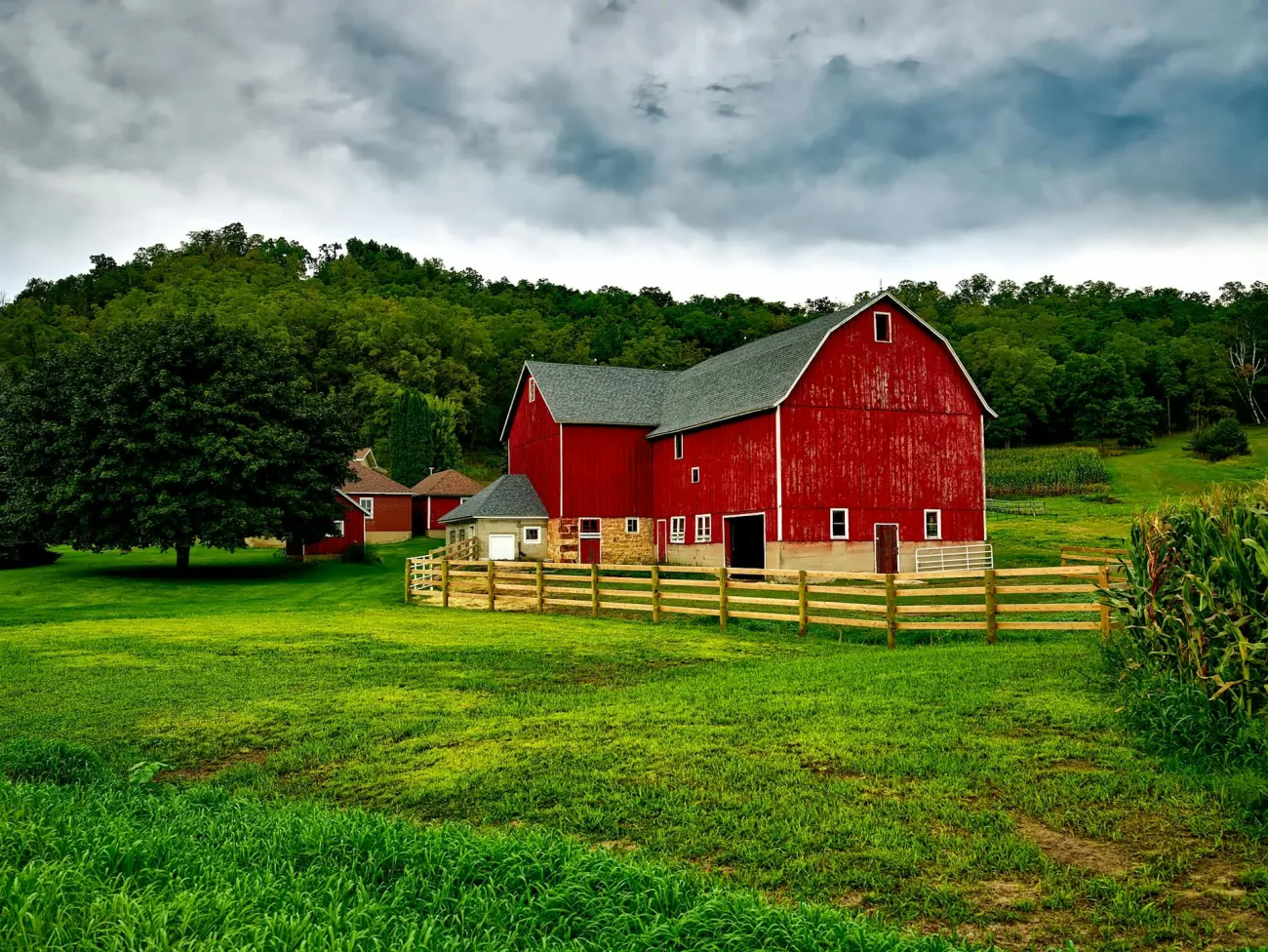Parity pricing, or setting a price floor comparatively equal to an historical period of fair compensation for agricultural commodities, has been debated by scholars as a solution to continually falling farm gate prices in the US. This paper explores the validity of this claim and offers a critique that parity pricing is no silver bullet. Low farm gate prices are rooted in complex and long standing injustices and if farmers are to achieve fair living wages, multi-pronged efforts across scales of governance will be required.

Summary
This paper assesses the potential for parity pricing in the US to address the widening gap between the prices received by farmers for their products from wholesalers (farm gate prices) and the prices needed to cover farm labour, materials, land tenure and living costs of the farmer. The authors use a case study of the production costs, farm gate prices and parity price for twelve specialty crops that are common in US farmers markets.
Parity pricing is a method of establishing price floors for agricultural products that should represent “fair” prices. This is done by establishing a price for a commodity that is comparatively equal to the farm gate price for that same commodity between 1910 and 1914, a reference period considered by the US government to be a time when US farmers received fair payments for commodities considering farming inputs and living expenses.
The study highlights both the growing gap between commodity prices and parity prices and the increasing difference between current farm gate prices and fair wages. The authors find that farm gate prices are significantly lower than parity prices. This does not mean, however, that consumers experience lower food prices.
The authors provide a brief history of agricultural commodity prices and farmer livelihoods and demonstrate that farm gate prices have fallen significantly over the last 100 years. They argue this is largely due to consolidation in the food industry, high input costs, and policies that motivate overproduction and cheap retail prices. They suggest farm households have turned to loans, government aid, and off-farm sources of income to off-set these plummeting prices. Other non-farm income may come from off-farm employment and/or businesses, investments, pensions and social security. Farm incomes have decreased compared to total income in the US since the original period of parity pricing which can be seen in Figure 1.
Figure 1: Ration of farm income to total income in the US over time
The authors also emphasise the unequal distribution of subsidy payments in the US, which tend to favour larger commercial farmers, especially those which produce corn, soy and wheat for animal feed, biofuel and export. Two-thirds of subsidy payments support these larger farms with less than one-third going to small-scale producers. The authors note that small-scale farmers, specialty crop growers and minority farmers are more vulnerable to the effects of low farm gate prices and losses and thus require more support.
The researchers state that whilst other major agricultural countries such as Canada, India and New Zealand have prioritised fair prices and positive returns for producers, the US has chosen to drive lower prices and maximal production. They argue this has contributed to an unsustainable agricultural system that results in low farm gate prices and ultimately negatively impacts farmers and their communities. The authors argue that this causes a larger proportion of farm income to be derived from off farm, especially for small-scale producers who can no longer support their households through farming alone.
The authors chose to focus on parity pricing as a possible solution to these issues. This is because farm household income began to decline after the end of the period in which parity pricing was a formal agricultural policy in the US (1910-1914).
Through a case study of 12 specialty crops, the authors find that none of the crops received close to parity prices during the period of study between 2014 and 2018 (see Figure 2). Farm gate prices were significantly lower than parity prices for all 12 crops. They also found that low farm gate price did not consistently correlate with lower prices for consumers. There was also no consistent relationship between crops with the highest production costs and crops with higher farm gate prices.
Figure 2: Farm gate, terminal price, retail price and parity price for 12 common agricultural commodities in the US.
Whilst the authors note the role that parity pricing might play in addressing low farm gate prices, they offer a critique to those who envision it as a sole solution. They argue that the issues underpinning these low prices and injustices are too complex and deeply rooted to be completely solved by parity pricing as some scholars have previously argued. Their critique focuses on the lack of consideration of farmer well-being, net income and production costs within parity pricing. They argue this results in parity pricing being an inadequate metric to generate profit for farmers let alone fair prices equal to a living wage.
Whilst the authors argue parity prices are not equal to fair wages, they are still higher than current farm gate prices. This means farmers are further from receiving equal purchasing power when compared to non-farming labourers in the US. The authors argue this has serious implications for rural economies due to reduced local economic activity. In other words, lower wages for farmers leads to less spending in local communities. This has wider implications which the authors argue reduce community resilience as well as limit funding for schools and medical services.
The authors present five policies and alternative models as suggestions for better supporting the livelihoods of small-scale farmers in the US which could be deployed alongside parity pricing.
Marketing orders
Marketing orders are policy initiatives which develop industry-specific regulations related to the production and sale of the industry product. These are administered by the United States Department Of Agriculture, but are initiated by producers and are implemented through a referendum vote of growers and handlers of a specific commodity. Once passed, the marketing order becomes binding for all handlers and growers of that commodity. Generally, these are regionally specific and have been shown to be successful for protecting farmers and ensuring fair gains. The authors note that achieving marketing orders as realised policies is difficult and requires time, immense political will and cooperation amongst farmers.
Price sets
Price sets are government set prices for specific goods which guarantee a price for a product over its production costs. The authors note previous research has not reached consensus on the advantages of price sets. They argue qualitative research and recent protests have demonstrated that farmers are in strong support of price sets across the US.
Supply management
Supply management policies are designed to limit the supply of agricultural commodities to maintain prices that are profitable for producers. They prevent overproduction, price drops and extremely low prices. The authors highlight that Canada successfully paired supply management policies with high tariffs on imports to successfully keep local products affordable, stabilise prices for producers and ultimately improve local economic and environmental conditions. They contrast this approach with that of the US which uses tax dollars to subsidise and maintain low retail prices, which the authors argue to be unsustainable.
Localised food systems
The authors provide several definitions of local food systems but note that “local” can mean different things in different contexts. For example, local may refer to how close food was grown to the consumer but it may also mean the scale at which food was produced independent of how far the food was produced from the consumer. They note, however, that generally localised food systems offer benefits to farmer well-being and in some instances better financial returns. Localised food systems are especially valuable to new entrant farmers and specialty crop farmers. The authors specifically mention that farmers markets and community supported agriculture (CSAs) are often spaces of privilege that not all producers nor all consumers have equal access to.
Local certifications
The authors compared local certifications and other certification schemes such as organic certification. They argue that organic certifications can be costly and time consuming despite offering generally higher profits for organic producers. Some initiatives have sought to develop local labels specific to locations and communities, regulated by local producers, consumers and retailers. The authors argue these local participant guarantee systems (PGS) can guarantee organic production and quality products without the need of a third-party certification.
The authors conclude by stating that parity pricing on its own is not likely to be enough to support farmers in the US to achieve self-sufficiency. Increasing living costs, debts, input costs and the percentage of income coming from off farm have created too large of a gap and too complex of a problem for parity pricing to overcome. Whilst the authors note parity prices are higher than current farm gate prices, farmers would still be required to bring income in from off-farm even with parity prices. They suggest multi-pronged efforts to combat these low prices which stem from market concentration at various levels of the supply chain, the agricultural contract system in the US and unequal distribution of support from the government.
Abstract
Producers in the U.S., particularly small-scale farmers and specialty crop growers, are unable to maintain their livelihoods with farming alone. This issue is convoluted by low farm gate prices stemming from the unequal distribution of market share and political support within the U.S. food supply chain. As a result, many farm activists and scholars have recommended a revitalization of parity pricing within U.S. policy. Parity pricing once served to set price floors considered to represent “fair” farm gate prices determined by the farm gate price and purchasing power of commodities during the parity period of 1910–1914. In this paper, we evaluate whether parity did exist during the set period of 1910–1914, showing farm incomes and non-farm incomes were not significantly different from one another during the parity period. We then explore the extent to which parity prices correspond to farm-gate prices, transfer terminal prices, and retail prices for a select group of twelve specialty crops. We show that farm gate prices are significantly lower than parity prices, do not necessarily translate into low prices for consumers, and do not consistently correlate with production costs. Lastly, we display the temporal correspondence between the end of parity pricing and declines in farm income. Our analysis contributes important evidence of the inequalities within production, payment, and pricing structures of specialty crops in the U.S. As such, we provide a critique of parity pricing arguing that parity pricing alone will not be sufficient to solve the complex and deeply rooted issues underpinning low farm gate prices and injustices within the U.S. food system. We conclude with a discussion of the impacts of low farm gate prices and areas for policy interventions.
Reference
Howe, M., Palde, L.P.R., Leuthart, K.R., Monroe, N.J., Allen, O.M., Czebotar, K., Lich, K.M., Babb, A.M., Knudsen, D.C., 2024. Is parity pricing enough? A critical analysis of parity pricing and the case for additional strategies. npj Sustain. Agric. 2, 1–10.
Read more here. See also the blog by TABLE’s Jack Thompson on Deconstructing Weetabix: What my family farm's supply chain taught me about power




Comments (0)